#phaon
Text
Legendary Warrior Women of the Ancient World
Once upon a time, there were women who challenged the might of empires and the laws of men.
They beckoned a world where the whisper of a woman's voice could quake the thrones of tyrants.
Let's delve into these legends from antiquity. 🧵⤵️
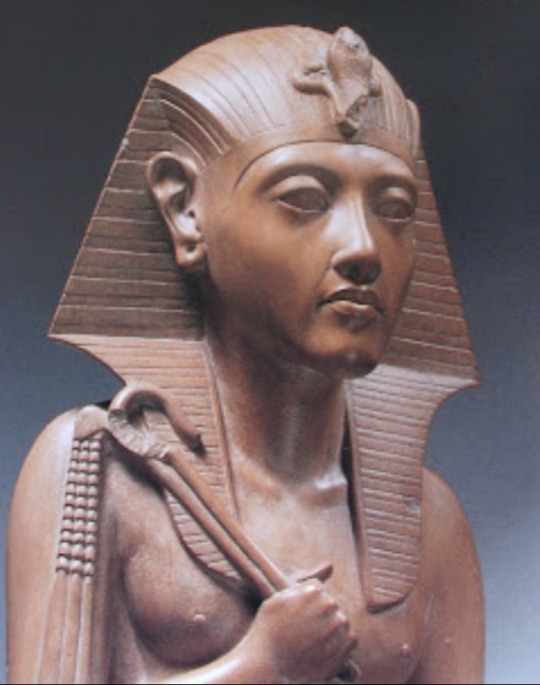
Hatshepsut
The fifth pharaoh of the Eighteenth Dynasty of Egypt, Hatshepsut reigned longer than any other woman of an indigenous Egyptian dynasty.
She was one of the most prolific builders in Ancient Egypt.
To legitimize her reign, Hatshepsut claimed she was divinely conceived by the god Amun, who appeared to her mother in the guise of the pharaoh Thutmose I, her father.
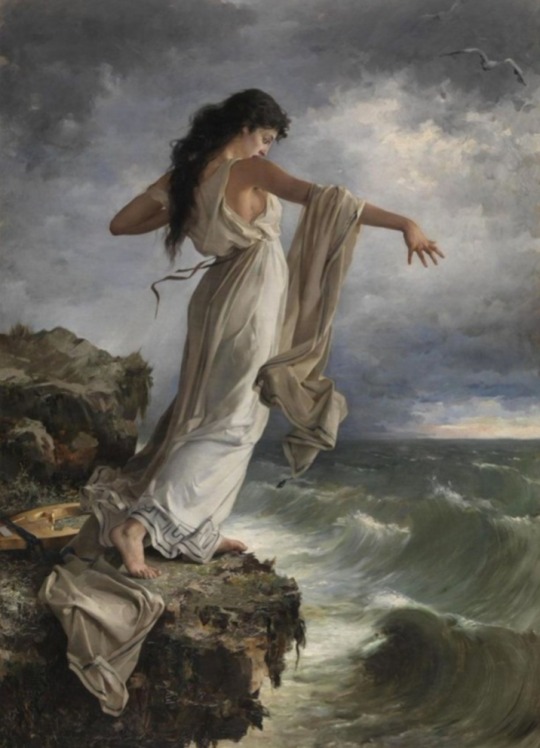
Sappho
An ancient Greek poet from the island of Lesbos, Sappho is celebrated for her lyric poetry, which explores love and passion.
Legend says that Sappho leaped from the Leucadian cliffs due to her unrequited love for Phaon, a ferryman, demonstrating the depth of her emotional expressions that permeated her work.

Artemisia I of Caria
A queen of the ancient Greek city-state of Caria and an ally of Xerxes I during the Second Persian invasion of Greece.
In the Battle of Salamis, Artemisia was so cunning in combat that she intentionally rammed her ally's ship to escape the Greeks, convincing them she was an ally and thus avoiding capture.

Hypatia
A mathematician, astronomer and philosopher in Alexandria, Egypt, Hypatia was a renowned teacher and thinker.
Hypatia was known to drive through Alexandria in her chariot to deliver public lectures on philosophy, defying the gender expectations of her time.
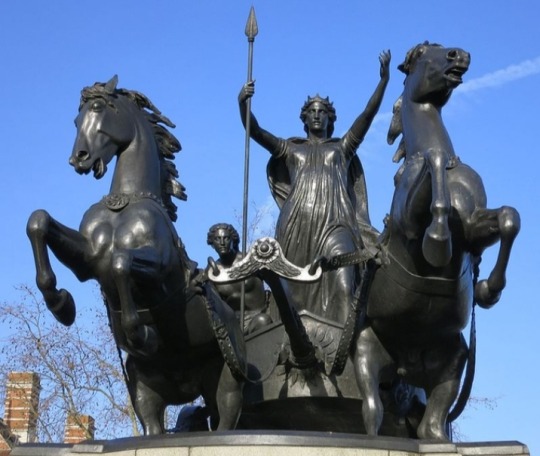
Boudicca
The warrior queen of the Iceni tribe who led a major uprising against the occupying forces of the Roman Empire in Britain.
After the Romans flogged Boudicca and raped her daughters, she rallied her tribe and neighboring tribes for revenge, resulting in the destruction of Roman settlements and the decimation of the Roman Ninth Legion.

The Trung Sisters: Trung Trac and Trung Nhi
Vietnamese military leaders who rebelled against Chinese Han dynasty rule, becoming enduring symbols of resistance.
The sisters, after witnessing the suffering of their people under Chinese rule, famously declared their independence by proclaiming:
"All the male heroes bowed their heads in submission; only the two sisters proudly stood up to avenge the country."

Khawlah bint al-Azwar
A legendary female Muslim warrior, she fought alongside the early Muslims in the battles against the Byzantine Empire.
Khawlah famously donned male warrior’s armor to rescue her brother from a Byzantine prison camp, charging into battle with such ferocity that opponents assumed she was a supernatural entity.

Joan of Arc
A French heroine and saint of the Catholic Church, Joan led French forces to victory over the English at Orléans.
Joan persuaded a skeptical Charles VII of France of her divine mission to save France by correctly predicting a military reversal at the Siege of Orleans, before any messenger could have reached them with the news.

Zenobia
The third-century queen of the Palmyrene Empire in Syria who challenged the authority of the Roman Empire.
Zenobia was so bold that she claimed descent from Cleopatra, positioning herself as the Egyptian queen's successor in defiance of Rome and marched her armies as far as Egypt and Anatolia.
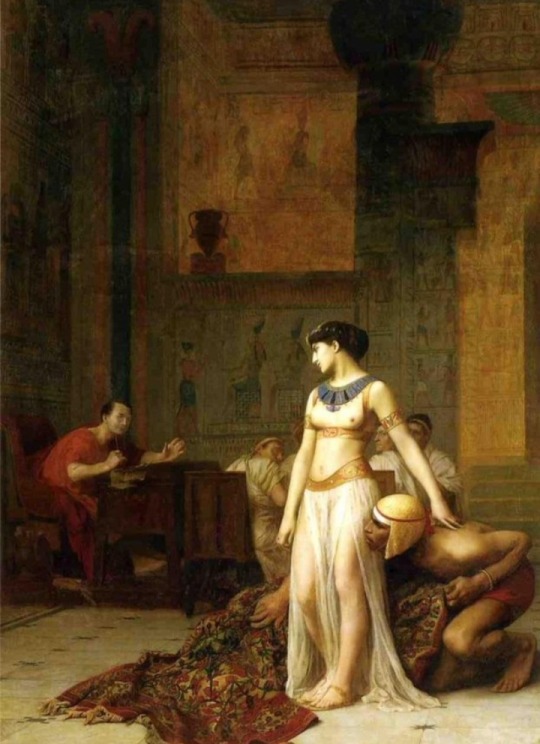
Cleopatra VII
The last active ruler of the Ptolemaic Kingdom of Egypt, Cleopatra is known for her intelligence, political acumen, and dramatic love affairs.
In a famous encounter to secure her alliance with Julius Caesar, Cleopatra had herself wrapped in a carpet (or linen sack, according to some accounts) and delivered to him, emerging to charm Caesar with her wit and beauty.
#female warriors#ancient civilizations#legendary warriors#Hatshepsut#Amun#Thutmose I#Sappho#Phaon#Artemisia I of Caria#Xerxes I#Hypatia#Boudicca#The Trung Sisters: Trung Trac and Trung Nhi#Khawlah bint al-Azwar#Joan of Arc#Charles VII of France#Zenobia#Cleopatra VII#Julius Caesar#ancient empires#ancient world#legends
5 notes
·
View notes
Text
Sappho Debunked- The Phaon debacle
Throughout her life and the little we know about it, many have claimed Sappho to be romantically involved with three different men: Phaon, Alcaeus, and her alleged husband “Kerkylas of Andros”
( ͡° ͜ʖ ͡°)
So what about her relationship(?) with the former?

Perhaps the most famous artwork capturing her likeness is the above, ‘Safo’ painted by Miguel Carbonel Selva in 1880. The image illustrates Sappho at her penultimate moment before she leaps from the white rock (theorised to be the Leucadian cliffs) and into the sea, ultimately ending her life. But why? And what does it have to do with this Phaon bloke?
First, we must begin with who he was.
Phaon is actually a mythological figure, said to be a ferryman working from Mytilene in Lesbos. He was old, ugly and overall had absolutely no bitches, other than his boat, which he would use to ferry people to Asia Minor. One day, Aphrodite came as a patron to Phaon’s ferry services, albeit disguised as an old woman. Being the lovely fellow he is, he took her across to her destination, insisting that it be free of charge. This act of kindness was in turn rewarded by the goddess, and she gave him an enchanted box of ointment. Upon application, Phaon, previously decrepit, became young and staggeringly beautiful. One could now say, he had mad riz and was never free of womanly touch ever again.
And that should, technically, be the end of his story.
Until the Athenians had something to say about it.
There were a surprising amount of Athenian comedy plays made in antiquity where Sappho was a leading character, and it happens that in one such Attic stage traffic, Sappho and Phaon appear.
As they had both lived in Mytilene, they just had to have known each other, so it was only natural that Sappho met the alluring Phaon and was instantly bewitched, falling helplessly in love with him. They oft’ danced the devils tango for a time, really enjoying each other’s, uh, company. But alas, soon Sappho grew mediocre and tiresome to the newly chadified Phaon, and it was even said that he came to prefer her maid to Sappho herself.
Haunted by her unfaithful lover and now unrequited affection, Sappho lept from the white rock, hoping that it would cure her of her love, or ultimately kill her.
she drowned.
:(
Unfortunately, this rendition of Sappho’s life became somewhat popular and was only further solidified when Ovid starting shipping it too, writing his poem ‘Sappho to Phaon’, and from there it’s only escalated. The most modern adaption of Sappho and Phaon today is, well, ‘Sapho and Phao’ by John Lyly, a comedy play written and performed for Queen Elizabeth I around 1584. (While doing extra research and double checking my facts, I also found a claimed broadway play of Sappho and Phaon, but I have no idea how credible that is as I could find no additional information and the site probably gave me a virus.)
The action of Sappho leaping from the cliffs is also said to have inspired the actions of a later Mytilenean cult, where yearly members were recreationally thrown off said cliffs accompanied by a white goat. The goal was to swim back to shore, if they hadn’t accidentally killed them in the process, to achieve what I’m not entirely sure. Let them roleplay.
To conclude, the Athenians liked writing Phaon/Sappho fanfiction and serialising it, and then it became wildfire. Historians and classicists alike cannot confirm a single detail about Phaon’s life, so whether he existed at all is massively up for debate.
So were Sappho and Phaon the greatest love of antiquity? Not at ALL! But it’s a fun story!
Does that mean this moonshine is to be criminalised, however, the tale stamped down into oblivion in our odyssey for truth about Sappho?
Again, no! The myth of Phaon will always be a gem for me, and a big part of Archaic pop culture, however, with stories like these, it can be easy to mistake the fanfics for cannon, but it’s nothing reading up and awareness can’t fix.
so now you know! Next time Wikipedia tells you Sappho and Phaon were a happy couple, you can say otherwise!
But who can really say whether the legend of Sappho and Phaon is based on the truth or not? Were Sappho and Phaon the real OTP?
after all, there is no smoke without fire…
what do you think?

Sappho, Phaon and Cupid, by Jacques-Louis David painted in 1809
#sappho#sapphism#sapphic#lesbian#history#classics#female poets#phaon#sappho of lesbos#sappho and her friend#sappho debunked#Miguel carbonel selva#long post#text post#jacques louis david#wlw#nblw#greek mythology
10 notes
·
View notes
Video
youtube
Combo your way to a stylish victory
#youtube#Lancer rpg#ttrpg#Mechanic Brewery#homebrew#Phaon Crescent#Crazy#Badass#Apocalyptic#Savage#Sick Kills#SMOKIN' SEXY STYLE
19 notes
·
View notes
Text

Scientific Name: Phyciodes phaon
Common Name(s): Phaon crescent
Family: Nymphalidae (brush-footed butterfly)
Life Stage(s): Adult
Location: Plano, Texas
Season(s): Summer
Not to be confused with pearl crescent.
The easiest way to tell the difference is the cream-colored band in the middle part of the forewing, which is found on phaon crescents but not pearl crescents. In general, phaons are also a bit smaller, with wingspans between 1″ and 1½″ (25–38 mm), while pearls range from 1¼″ to 1¾″ (32–45 mm).
The Alabama Butterfly Atlas notes that frogfruits are host and nectar plants for phaon crescents, and pearl crescents prefer asters. I would imagine that these butterflies visit more plants than just their preferred species, but it happens that (though it’s probably hard to tell here) this one is indeed perched on a frogfruit flower head. Similarly, the pearl crescent from my earlier post was resting on an aster plant.
#Phyciodes phaon#phaon crescent#Nymphalidae#Plano#Texas#summer#orange#butterfly#Lepidoptera#insect#bugblr
17 notes
·
View notes
Text

soooo many thoughts about this. they tried to silence her lesbianism. he fucking fumbled the bag. she would not fuckimf do that. he deserved what he got and more
#how do u fumble sappho and not just curl up and die genuine question btw#he rlly did not gaf wowww#excerpt from phaon’s wikipedia page#my text
3 notes
·
View notes
Text
Phaon Crescent Butterflies Absolutely Love the Spring Sun
Phaon Crescent Butterflies Absolutely Love the Spring Sun shows one of these gorgeous spring butterflies warming itself in the afternoon sun.
Sun Worshipper
One of our most colorful spring butterflies is the Phaon crescent (Phyciodes phaon). It’s a brushfooted butterfly like the American lady and the gulf fritillary, and it’s usually one of the first ones to appear, so it’s frequently on the wing while the weather is still a little cool, especially at night. Insects depend on the temperature outside (or inside, when they manage to get…

View On WordPress
#beautiful butterflies#beautiful insects#brushfooted butterflies#butterflies#butterflies in the sun#butterfly#butterfly photographs#butterfly photography#colorful butterflies#colorful insects#Florida brushfooted butterflies#Florida butterflies#Florida insects#insect photographs#insect photography#insects#Phaon crescent#Phaon crescent butterfly#photography#southern butterflies#spring butterflies
1 note
·
View note
Text
Ovid Daily's Summer Book Club 2023:
The Heroides
The first fifteen poems feature letters (written in elegiac couplets) from famous heroines of myth to their lovers, including: Penelope to Odysseus, Dido to Aeneas, Medea to Jason, among many others. The last six (aka the Double Heroides) are paired letters from heroes and responses from heroines, including Paris and Helen, among others.
The Heroides will run from Monday, July 10, 2023 to Monday, September 25, 2023. Each poem will be spread over 2 to 3 days, depending on its length. The Latin and translation will be those featured in Grant Showerman's 1914 edition.
Schedule:
July 10 & 11: Penelope to Odysseus
July 13 & 14: Phyllis to Demophoon
July 17 & 18: Briseis to Achilles
July 20 & 21: Phaedra to Hippolytus
July 24 & 25: Oenone to Paris
July 27 & 28: Hypsipyle to Jason
July 31 & August 1: Dido to Aeneas
August 3 & 4: Hermione to Orestes
August 7 & 8: Deianira to Hercules
August 10 & 11: Ariadne to Theseus
August 14 & 15: Canace to Macareus
August 17 & 18: Medea to Jason
August 21 & 22: Laodamia to Protesilaus
August 24 & 25: Hypermnestra to Lynceus
August 28 & 29: Sappho to Phaon
August 31, September 1 & 2: Paris to Helen
September 5, 6 & 7: Helen's response to Paris
September 11 & 12: Leander to Hero
September 14 & 15: Hero's response to Leander
September 18, 19 & 20: Acontius to Cydippe
September 23, 24 & 25: Cydippe's response to Acontius
64 notes
·
View notes
Note
An article about how Sappho's highly fetishized relationship with men was used to erase her obvious homoeroticism and how lesbians often experience being hypersexualized for their imaginary relationship with men and have their relationship with women entirely denied.
Some asshole: actually, Sappho is bisexual.
Like, I would love to entertain the thought of Sappho being bisexual because wouldn't it be great if her relationship with men didn't negate her relationship with women? But your argument has to be compelling: Phaon was first introduced in an ancient Greek comedy and Ovid said that her love for him erased all her previous attraction to women, her husband is "dick from man island," and you can't site scholars that specifically argued against her homoeroticism by making her a schoolmistress or something.
Also, why would celebrating Sappho's obvious attraction to women offend you in any way? Sappho loved women, deal with it. And even if there was a hypothetical situation where there were clear instances of Sappho's attraction to men, why would focusing on her love for women be offensive?
I feel like we will never truly know what she was. And people don’t accept that.
Some people say “she did write about men, she’s bisexual”. 1) From what I know a lot of her writing when it came to women was erased and translated to be with men, 2) Considering the society she lived in, even if she was with men at one point that doesn’t necessarily mean she was attracted to men.
21 notes
·
View notes
Text
THIS DAY IN GAY HISTORY
based on: The White Crane Institute's 'Gay Wisdom', Gay Birthdays, Gay For Today, Famous GLBT, glbt-Gay Encylopedia, Today in Gay History, Wikipedia, and more … February 27



6th Century BC – Sappho, Greek lyric poet, born. Of course, this is another one of those dates that is arbitrary. Sappho was the greatest of all the early Greek lyric poets, born on the island of Lesbos. Her birth was sometime between 630 and 612 BC, and it is said that she died around 570 BC, but little is known for certain about her life. The bulk of her poetry, which was well-known and greatly admired throughout antiquity, has been lost, but her immense reputation has endured through surviving fragments. She was called "the Tenth Muse" by no less than Plato.
Sappho's poetry centers on passion and love for various personages and both genders. The word lesbian derives from the name of the island of her birth, Lesbos, while her name is also the origin of the word sapphic; neither word was applied to female homosexuality until the nineteenth century.
The female narrators of many of her poems speak of infatuations and love (sometimes requited, sometimes not) for various females, but descriptions of physical acts between women are few and subject to debate. Whether these poems are meant to be autobiographical is not known, although elements of other parts of Sappho's life do make appearances in her work, and it would be compatible with her style to have these intimate encounters expressed poetically, as well. Her homoerotica should be placed in the context of the seventh century (BC).
A tradition going back at least to Menander suggested that Sappho killed herself by jumping off the Leucadian cliffs for love of Phaon, a ferryman. This is regarded as unhistorical by modern scholars, perhaps invented by the comic poets as a sort of ironic "revenge of the gods." or the legend may have resulted in part from a desire to assert Sappho as heterosexual.

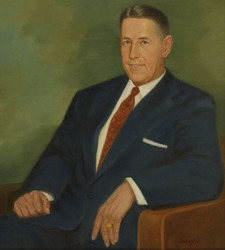
1905 – One of the most infamous hateful racist homophobes and general misanthropes Charley Eugene Johns was born on this date.(d.1990). Johns was an American politician and the thirty-second governor of Florida from 1953 to 1955. Why cover Johns? Because most of us don't know this history and it's important to know what happened so it doesn't happen again.
Johns is most remembered for his support and chairmanship of the infamous Florida Legislative Investigation Committee, nicknamed the "Johns Committee" because of Johns' chairmanship. This committee participated in the Red Scare and Lavender scare by investigating communists, homosexuals, and civil rights advocates among the students and faculty of Florida's university system. They were responsible for revoking teachers' certificates and firing university professors. By 1963, the committee had forced the dismissal or resignation of over 100 professors and deans at the University of Florida, Florida State University and the University of South Florida. One professor attempted suicide after being investigated by the committee.
The state legislature ended funding for the committee in 1964 after it released a report called Homosexuality and Citizenship in Florida, which infamously became known as the "Purple Pamphlet". Its many photographs depicting homosexual acts outraged legislators and reportedly copies of the report were being sold as pornography in New York City.
In 2005, UF Today, an alumni publication of the University of Florida, included Johns in a list of 81 "outstanding" UF alumni. Johns attended UF only for a few months and did not graduate. The editor apologized for the error, and the alumni association said that including him was a mistake.


1927 – James Leo Herlihy was born on this date (d.1993). Herlihy wrote "Midnight Cowboy" and "Season of the Witch." Born in Detroit, Michigan, Herlihy attended Black Mountain College in North Carolina, a small, experimental institution whose faculty included Merce Cunningham, John Cage, Willem de Kooning, and other innovative figures in the arts. Herlihy studied art, music, and literature.
Like his close friend and mentor Tennessee Williams, Herlihy was a gay author whose works delved into taboo subjects and broke new ground for what was acceptable to major publishers. His 1958 play Blue Denim confronted teenage sexuality and abortion and was praised in a newspaper column by Eleanor Roosevelt.
Along with Williams, Herlihy became part of a circle of friends and lovers in Key West- mostly gay writers and "theater people"- that included James Kirkwood Jr., co-writer of A Chorus Line and author of cult novels and plays including There Must Be a Pony!; Evan Rhodes, the author of The Prince of Central Park; one-time singer and agent Dick Duane, to whom Herlihy dedicated two of his finest novels, All Fall Down and Midnight Cowboy; and to a lesser extent, visiting writers like Truman Capote and Gore Vidal. Author Christopher Isherwood paints the scene in an entry from his diary in August 1959: "(Broadway producer Walter) Starcke came by, en route for Japan and round the world . . . 'Now I live by grace,' says Starcke. 'I live every hour of every day to its fullest.' Actually he is in Key West, dealing in real estate and having parties with Herlihy and his friend which sometimes go on until morning. Lots of sex."
Herlihy's novels often feature protagonists living outside mainstream American culture, like Joe Buck, the male prostitute in Midnight Cowboy and Witch Gliz, the female teenage runaway in Season of the Witch. He wrote about aspects of the Gay subculture in urban America in much of his fiction. Most of his books are now out of print, although they were very popular at the time of their publication.
Herlihy committed suicide, aged 66, by taking an overdose of sleeping pills in Los Angeles.


1932 – Dame Elizabeth Taylor, DBE (d.2011) was a British-American actress. From her early years as a child star with MGM, she became one of the great screen actresses of Hollywood's Golden Age. As one of the world's most famous film stars, Taylor was recognized for her acting ability and for her glamorous lifestyle, beauty and distinctive violet eyes.
National Velvet (1944) was Taylor's first success, and she starred in Father of the Bride (1950), A Place in the Sun (1951), Giant (1956), Cat on a Hot Tin Roof (1958), and Suddenly, Last Summer (1959). She won the Academy Award for Best Actress for BUtterfield 8 (1960), played the title role in Cleopatra (1963), and married her co-star Richard Burton. They appeared together in 11 films, including Who's Afraid of Virginia Woolf? (1966), for which Taylor won a second Academy Award. Her much publicized personal life included eight marriages (twice to Burton) and several life-threatening illnesses.
Taylor devoted consistent and generous humanitarian time, advocacy efforts, and funding to HIV and AIDS-related projects and charities, helping to raise more than $270 million for the cause. She was one of the first celebrities and public personalities to do so at a time when few acknowledged the disease, organizing and hosting the first AIDS fundraiser in 1984, to benefit AIDS Project Los Angeles.
Taylor was cofounder of the American Foundation for AIDS Research (amfAR) with Dr. Michael Gottlieb and Dr. Mathilde Krim in 1985. Her longtime friend and former co-star Rock Hudson had disclosed having AIDS and died of it that year. She also founded the Elizabeth Taylor AIDS Foundation (ETAF) in 1993, created to provide critically needed support services for people with HIV/AIDS. For example, in 2006 Taylor commissioned a 37-foot (11 m) "Care Van" equipped with examination tables and xray equipment, the New Orleans donation made by her Elizabeth Taylor AIDS Foundation and Macy's. That year, in the wake of Hurricane Katrina, she also donated US$40,000 to the NO/AIDS Task Force, a non-profit organization serving the community of those affected by HIV/AIDS in and around New Orleans.Taylor was honored with a special Academy Award, the Jean Hersholt Humanitarian Award, in 1992 for her HIV/AIDS humanitarian work. Speaking of that work, former President Bill Clinton said at her death on March 23, 2011, "Elizabeth's legacy will live on in many people around the world whose lives will be longer and better because of her work and the ongoing efforts of those she inspired."


1971 – Derren Brown is an English illusionist, mentalist, painter, writer and sceptic. He is known for his appearances in television specials, stage productions, photographic memory, and British television series such as Trick of the Mind and Trick or Treat.
After studying German and Law at the University of Bristol, Derren Brown started out as a traditional conjurer specialising in close magic before moving into stage hypnotism and eventually into television on Channel 4, where he has produced several controversial series using a combination of 'magic, suggestion, psychology, misdirection and showmanship'.
Using his knowledge and skill he appears to be able to predict and influence people's thoughts with subtle suggestion, manipulate the decision making process and read the subtle physical signs or body language that indicate what a person is thinking. His sometimes disturbing shows have included Derren Brown's Mind Control, Russian Roulette, Seance, Messiah and The Heist. He often uses his skills to debunk religous, supernatural and paranormal beliefs. He has written several books on magic and tricks of the mind and regularly takes his show on tour.
Brown had been in the spotlight for several years before revealing himself to be gay in an interview in a Sunday newspaper supplement in September 2007. In an interview with the Radio Times in 2011 Brown talked more about his sexuality, stating that he is blissfully happy in a relationship. He said,
"I spent a lot of time thinking about me and working on what I wanted to be before I came into a relationship. In some ways, it's bad because you come into relationship quite late without a lot of experience and you have a lot to learn. But that can also be exciting. Certainly, it's lovely to have somebody love you and it's lovely to love someone else."


1975 – The American screenwriter and director Christopher (Beau) Landon was born today. Best known as the writer of 2007 film Disturbia and as the son of filmmaker Michael Landon.
Most of Landon's films deal with LGBT themes and issues, including $30, one of five components in Boys Life 3, a collection of short films dealing with issues faced by gays, and a spec script about the relationship between a straight man and a gay man. More recently, he has written the screenplays of the 2007 films Blood and Chocolate, The Flock and the acclaimed Disturbia. Disturbia was one of his spec scripts which was brought to Montecito Pictures and subsequently DreamWorks Pictures, and went on to become No. 1 in cinemas upon its release. Since then he has worked on The Lesson, a film for DreamWorks, and the 2007 television series Dirty Sexy Money, his first television project, eager to expand his repertoire. He has also worked on the screenplay of the film adaption of Lisa McMann's young adult novel Wake. He has recently been achieving some success as a writer on the Paranormal Activiy franchise.
Landon came out as gay in 1999 having only written the script of Another Day in Paradise, unafraid of his sexuality harming his career potential. He was aware that homophobia may have harmed his potential in the industry. "I may fall off some list because of my sexuality. But if that happens, then I really don't want to be on that list anyway," he said, speaking of homophobia in Hollywood and the film industry.
He says that growing up he was labeled a faggot by peers at his high school. His mother, a Christian, initially hesitated to accept his sexuality, but he told her, "I don't even know if I believe in God, but if I do, he gave you a gay son so that you can start confronting some of these issues and get yourself out of the box you've placed yourself in for so long." His stepmother, Cindy Clerico, his father's next wife, told him that both she and his father always suspected he was gay.

Some rather indiscreet pics which have surfaced on the internet reveal that, like his father, he is very well-hung.

"Little" Joe

2017 – When We Rise, an ABC mini-series, premiers on this day. It was a docudrama miniseries about LGBT rights, created by Dustin Lance Black. The 45-year saga tells the evolving history of the modern gay rights movement, starting just after the Stonewall riots in 1969.



14 notes
·
View notes
Photo

Sir Lawrence Alma-Tadema (Dutch-British, 1836 - 1912)
An Eloquent Silence, 1890
In a review of the exhibition at the New Gallery of 1890, the Saturday Review comments "Eloquent Silence is a group of two Roman figures seated side by side on a marble bench with a low wall of white marble at their backs. Over this wall a Jacmanni clematis covered with blossoms like great purple butterflies is seen against the blue Italian sky. A dark blue vase glass stands on the wall. Far away in the distance are Mr. Tadema's favourite streak of azure sea and snow white island. The figures are in suspended action the man bending forward draws with his staff on the marble pavement the girl sits upright waiting for what may happen. This is one of Mr. Tadema's most successful little masterpieces..."
Eloquent Silence is a perfect depiction of Ebers' scene of two lovers described as sitting on a marble bench, surrounded by brightly colored flowers overlooking the sea. In chapter VI, it reads: "Then she again gazed into the distance. Phaon shook his head, and both remained silent for several minutes. At last he raised himself higher, turned his full face toward the young girl, gazed at her as tenderly and earnestly as if he wished to stamp her image upon his soul for life."
#Sir Lawrence Alma-Tadema#art#british art#dutch#fine arts#romans#romans in art#mediterranean#classical art#godward#traditional art#art history#oil painting#an eloquent silence 1890#an eloquent silence#fine art#british#public domain
79 notes
·
View notes
Note
Assign butterflies to your OCs?
Thank you
Arline Lanes: Banded Hairstreak

Fox: Baltimore Checkerspot

Carina Shepherd/Beatrice Maddison: Mourning Cloak Butterfly

Dannie Karim: Common Buckeye Butterfly

Ryn Halvorsen: Eastern-tailed Blue Butterfly

Silas Petersson: Malachite Butterfly

Pigeon: Checkered White

Arith: Blue Morpho

Iriel: Anise Swallowtail Butterfly

Kaia: Black Swallowtail

Odel: Phaon Crescent Butterfly

Eliška Hasek: Green Comma Butterfly

Marigold Rosales: Bordered Patch Butterfly

Rosie Rosales-Maximoff: American Lady Butterfly

Allison Dahir: Red-spotted Purple Admiral

Lee Quinn: Little Wood-Satyr

Jelaa Latka: Pipevine Swallowtail

Van Kahl: Ceraunus Blue Butterfly

#answered asks#pringle answers#practically an xman#insects#bugs#bugs tw#insects tw#arline the arcane oc#oc: fox#carina shepherd // beatrice maddison#dannie karim#ryn halvorsen#silas petersson#nameless ghoul pigeon#pringles good omens ocs#eliška hasek#xmen oc au#lee quinn#jelaa latka#van kahl
4 notes
·
View notes
Text
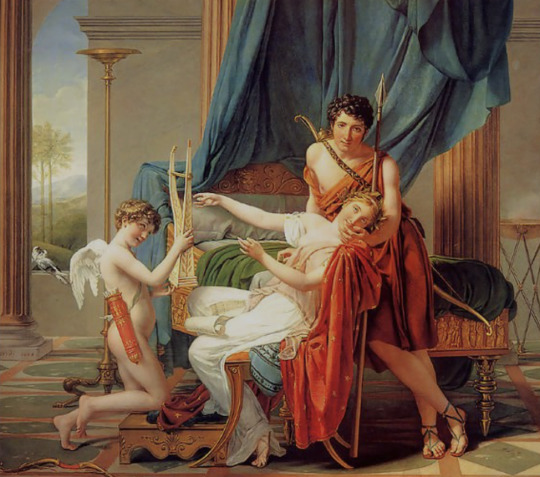
“….nor in the hundred other maids I loved here to my reproach; unworthy one, the love that belonged to many maids you alone possess”. Ovid, Sappho to Phaon 19-20
The translation of Ovid's Sappho to Phaon mentions that she loved maids that but she now loves Phaon more. Was Ovid saying that the love of a young man is greater than that of a maid (female). Or does she currently have a new passion for this particular person, which at this moment has enraptured her and caught her attention like a new toy? Or is Sappho one who loves those who are not fully men, like a woman; a softer, fairer partner. Was Sappho’s love sexual passion, friendly admiration, or devoted love?
Even Mary Robinson wrote her Sappho and Phaon sourced from Ovid. If Ovid's version of Sappho with her dramatic love for one that scorned her the was most well-known story of Sappho is does make sense that that specific image of a matron’s attraction to a young male that eventually causes her to commit suicide out of her deep love and pain, would persist. As well, that it would bleed into Victorian scholarship of Sappho especially if they wanted to see her as a tragic hetero character.
“For centuries, the most popular story about her love life was one about a hopeless passion for a handsome young boatman called Phaon, which allegedly led her to jump off a cliff.” Mendelsohn, Girl, Interrupted Who was Sappho?, 2015
Painting: Sappho and Phaon, Jacques-Louis David 1809
2 notes
·
View notes
Text
Names for a Saytr!
Callias
Chevon
Evander
Fern
Nomios
Pacer
Panos
Phaon
Silvanus
Sylvan
Sunbeam
Zephyrus
10 notes
·
View notes
Text
«The Knock of horses hooves, is injuring my hearing! »

Said Nero the quotation from Iliad and stubbed himself with a knife on the 9th of June in 68.
There was a mutiny in Gallia. Senator Galba and his legions was moving to the Rome. Nero was going to go to Egypt to have ships and army. Then he recognised that Nimfidius Sabin and his part of Praetorian guard left him. Nero's satellites began to ignore his orders. When emperor was in Servilla's Gardens, he was informed that Tigellinus betrayed him to (we don't know exactly about him) Then caesar came back to his palace, there weren't any bodyguards. Nero went to sleep. He slept until midnight. After getting up, emperor saw there were only slaves in the palace, all his friends left him.
Freedman Faon offered him to hide in his villa, Nero agreed. Freedmen Epaphroditus, Phaon, Neophyte and Sporus stayed with him.
When they were riding horses, thunder was roaring. Escapers heard how soldiers shouted delighted phrases to Galba, when they went past their camp.
At the villa Nero got a letter from senate. Senators called him enemy of people. It meant, that Nero's way to executed would be whipping.
When Nero heard knocks of hooves, he killed himself with a dagger. Epaphroditus helped him. Nero was still alive, when soldiers came in. One of them tried to stop the emperor's blood and Nero said him "Is this your loyalty?!"
And died. He was 30. The last emperor from Julius–Claudius dynasty. The last, but not the worst.
Sporus
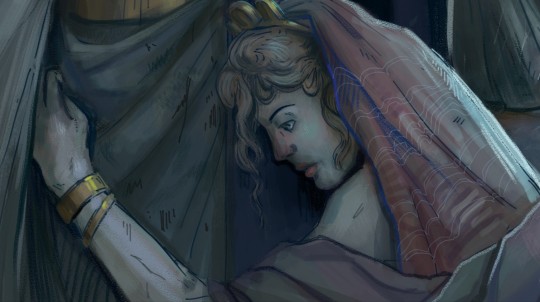
Nero
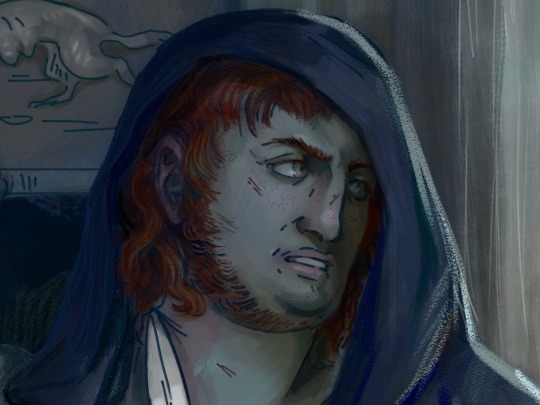
Neophyte and Epaphroditus
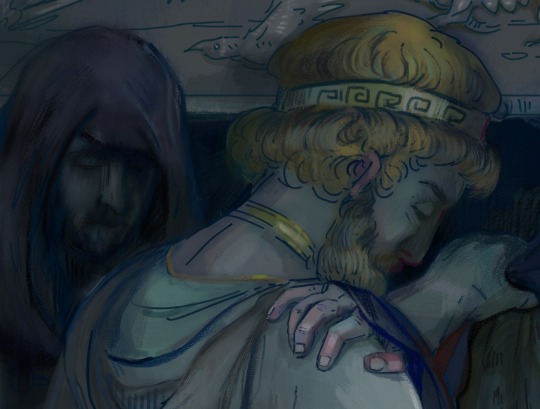
Phaon

#ancient rome#nero#RomanEmpire#sporus#NeroClaudius#spqr#ancient rome art#rome#italia#Ahenobarbus#an artist#Roman Emperor#Emperor
19 notes
·
View notes
Text
It's the small things.

This is a Phaon crescent butterfly. You can see just how small by comparing to the clover. I saw the butterfly yesterday in my backyard.
"Phaon Crescent Phyciodes phaon - Wingspan: 1 - 1½ inches (2.5 - 3.8 cm). The forewing is dark orange and black with a pale cream band. The underside of the hindwing is cream to yellowish; spring and fall butterflies have a gray hindwing." - alabama.butterflyatlas.usf.edu
10 notes
·
View notes
Text

"Terracotta Aryballos (Perfume Vase) in the form of a sandaled right foot", Rhodian, Mid-Sixth Century BCE
Getting a Footing
I figured that for my first post I might as well address that yes, my icon is a foot. Well, it's not a foot in a "c'est n'est pas une pipe" kind of way. This beautiful object is a 6th-century BCE Aryballos, a specific type of Greek vase for holding oils, mostly perfumes, from the island of Rhodes. These vases come in all sorts of shapes and sizes, depicting scenes, animals, geometric patterns, or even, human figures.
The sandaled foot caught my attention the first time I ever visited the Met Museum. With my background being in Costume Design, my first immediate thought was "This is fantastic costume research". Very rarely do you get a three-dimensional depiction of clothing from ancient times in such considerably great shape. What I also found interesting is that this is not the only foot-shaped Aryballos in the Met's Collection, there was another, different in design, but also was an excellent depiction of Ancient Greek footwear. It reminded me of modern examples of foot-wear-shaped perfume bottles such as Carolina Herrera's Good Girl collection, pictured below, a parallel that greatly entertains me. Finding those commonalities with the ancients is one of the things I love most about archaeology and it poses the idea that maybe the ancient Greeks weren't unlike ourselves.
I was doing some reading on Ancient Greek perfumes in preparation for this post and came across an article by the Museum of Perfume Paris in which the author shares the story of Phaon, an old, ugly sailor, who was gifted a scented ointment by the goddess Aphrodite. This ointment when applied made Phaon young and beautiful, and any woman who saw him fell in love with him. Phaon's story is an interesting explanation of the romantic powers of perfume in Greek mythology, but it wasn't the only one. In the Illiad, song XIV, Helen applies perfume with the hopes of winning back her husband after the events of the Trojan War. It made me wonder if this Aryballos could have been a gift between lovers. Maybe as a way to remember their love or memorialize the beauty of their betrothed. Many Aryballos in the Met and others' collections are shaped like the helmeted heads of warriors, perhaps gifts for their loved ones as they went off to war.
It is important to note that perfumed oils were used by both men and women, and for a variety of occasions including religious ceremonies, weddings, funerals, and even athletic competitions. With that in mind, Aryballoi, in general, certainly uphold and project typical Ancient Greek values, such as class, gender, faith, and bravery, but I am curious as to the specific story behind the sandaled foot. Was it simply a display of socioeconomic status? Or perhaps it once stood as a reminder of love and admiration (The romantic in me likes to imagine so). I will leave you with these thoughts and I am interested to hear your own opinions.
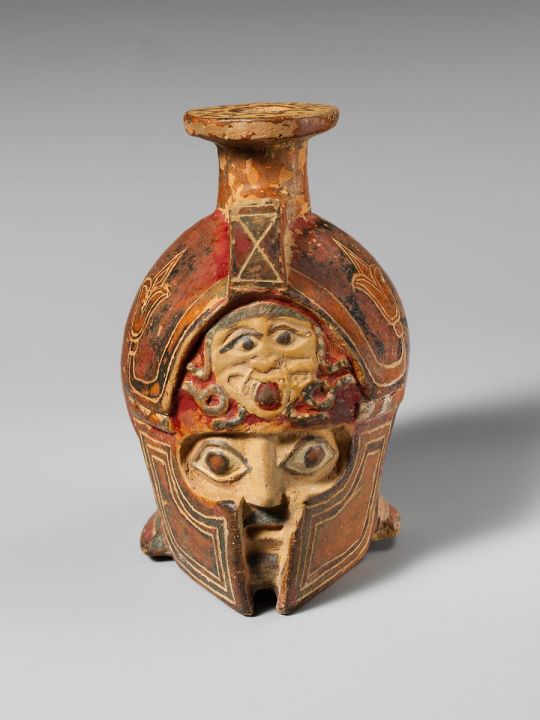

Other Aryballoi in the Met's Collection. Left: Helmeted Soldier Aryballos, Right: Sandaled Foot Aryballos

Carolina Herrera's Good Girl Collection, Footwear Inspired Packaging
Read more about Greek Aryballoi and Ancient Perfumery below:
"Divine Scents in Ancient Greece" by Isabelle Bardiès, Musee du Parfum
"Perfumery from Myth to Antiquity" by Dimitra Voudouri & Christine Tesseromatis, International Journal of Medicine and Pharmacy
"The Greek Sense of Smell: Olfactory Perception and the Sociocultural Roles of Perfume in Antiquity" by Grainne Louise Grant, University of Exeter
#history#archeology#ancient greece#aryballos#perfume#ceramics#classical antiquity#greek history#ancient history#classical archaeology#greek mythology#humanitarianhistory
2 notes
·
View notes